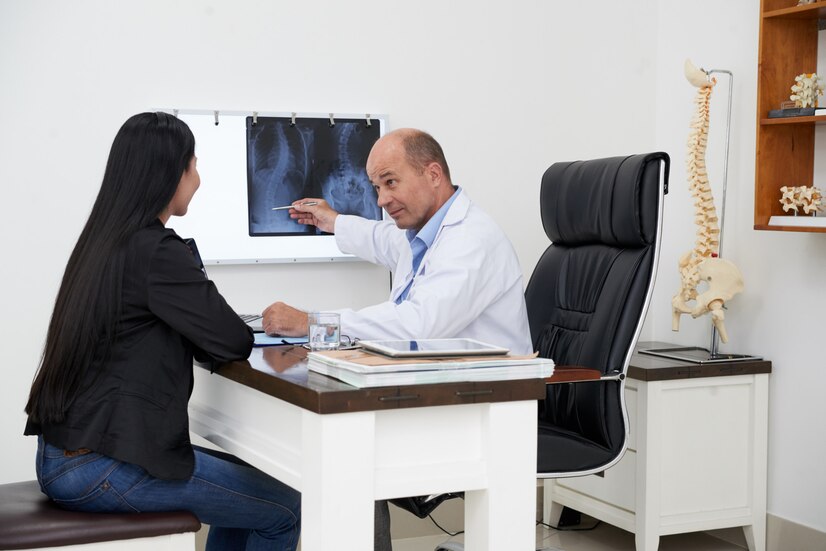Orthopedic issues involve conditions that affect the musculoskeletal system, which encompasses bones, joints, ligaments, tendons, and muscles. These conditions can lead to pain, stiffness, and limited mobility, significantly impacting daily life. This article will discuss the most prevalent orthopedic diseases and their treatments, offering insights into effective management strategies.
Causes of Orthopedic Problems
Orthopedic problems can arise from various causes, including injuries, aging, repetitive motions, or genetic predispositions. Grasping these factors is essential for proper management and prevention. Orthopedic symptoms often manifest as pain, stiffness, swelling, and reduced mobility, and recognizing them early can lead to better outcomes.
Common Orthopedic Diseases and Their Treatments
1. Arthritis: The Silent Enemy
Arthritis is one of the most common orthopedic diseases, characterized by joint inflammation and degeneration. It primarily includes two types: osteoarthritis and rheumatoid arthritis.
● Osteoarthritis: This type of arthritis results from the gradual wear and tear of joints, often affecting weight-bearing areas such as the knees, hips, and spine. Treatment options for osteoarthritis include pain management, physical therapy, and, in severe cases, joint replacement surgery.
● Rheumatoid Arthritis: This autoimmune disorder causes the immune system to attack the joints, leading to inflammation and damage. Treatment typically involves medications, physical therapy, and lifestyle changes to manage pain and prevent joint deformity.
2. Fractures: When Bones Break
Fractures or broken bones are common orthopedic problems resulting from trauma, falls, or accidents. Prompt and appropriate orthopedic treatment is essential to ensure proper healing and avoid complications.
● Diagnosis and Treatment: Fractures are diagnosed using physical exams, X-rays, and sometimes advanced imaging techniques. Treatment may include immobilization with a cast or brace, bone realignment (reduction), or surgical intervention using plates, screws, or rods to stabilize the bone.
3. Sprains and Strains: Ligament and Tendon Injuries
Sprains and strains are injuries to ligaments and tendons, respectively, often resulting from physical activities or sports. These injuries may lead to pain, swelling, and restricted mobility.
Treatment Options: Initial treatment involves rest, ice, compression, and elevation (RICE) to reduce pain and swelling. Physical therapy may be recommended to improve flexibility and strength. Severe cases might require surgery to repair torn ligaments or tendons.
4. Back Pain: A Common Culprit
Back pain is a prevalent orthopedic problem that affects people of all ages. It can result from muscle strain, herniated discs, spinal stenosis, or degenerative conditions, significantly impacting daily activities.
● Treatment options differ based on the underlying cause and severity of the condition.
● Conservative approaches include medications, physical therapy, and exercise. In some cases, minimally invasive procedures or surgery may be necessary to relieve pain and correct structural issues.
5. Torn ACL: The Sports Injury
An anterior cruciate ligament (ACL) tear is a common sports-related injury, particularly in activities involving sudden stops or changes in direction. It leads to knee joint instability and pain.
● Treatment Options: ACL tears often require surgical reconstruction to repair the damaged ligament, followed by physical therapy to regain strength, stability, and range of motion in the knee.
6. Osteoporosis: Brittle Bones
Osteoporosis is a condition marked by weakened bones, increasing the risk of fractures. It mainly affects older individuals, especially postmenopausal women, due to hormonal changes and bone density loss.
● Prevention and Treatment: Preventive measures include a diet rich in calcium and vitamin D, regular exercise, and avoiding smoking and excessive alcohol consumption. Medications may be prescribed to slow bone loss and reduce fracture risk.
7. Carpal Tunnel Syndrome: The Desk Job Syndrome
Carpal tunnel syndrome (CTS) results from the compression of the median nerve in the wrist, causing pain, numbness, and tingling in the hand and fingers. It commonly affects individuals who perform repetitive motions or work at a desk for long periods.
● Treatment Options: Treatment for CTS includes splinting, medications to relieve pain and inflammation, and physical therapy. In severe cases, surgery may be necessary to alleviate pressure on the median nerve.
8. Rotator Cuff Tear: Shoulder Woes
A rotator cuff tear involves damage or tearing of the tendons and muscles around the shoulder joint, often from acute injury or degeneration over time. This condition can cause pain, weakness, and limited shoulder mobility.
● Treatment Options: Physical therapy is often used to strengthen surrounding muscles and improve the range of motion. Surgical repair of torn tendons may be necessary in severe cases to restore function and relieve pain.
9. Tennis Elbow: A Painful Reminder
Tennis elbow, or lateral epicondylitis, is characterized by pain and inflammation on the outer part of the elbow. It affects individuals engaging in repetitive gripping or twisting motions.
● Treatment Options: Treatment includes rest, physical therapy, and braces or splints to reduce strain on the affected area. Corticosteroid injections may be recommended to alleviate pain and inflammation in more severe cases.
10. Plantar Fasciitis: Foot Troubles
Plantar fasciitis causes pain and inflammation in the plantar fascia, a thick tissue band along the bottom of the foot. Overuse or excessive strain typically triggers this condition.
● Treatment Options: Treatment involves rest, stretching exercises, physical therapy, and the use of orthotic devices or supportive footwear. Nonsteroidal anti-inflammatory drugs (NSAIDs) may also be used to alleviate pain and reduce inflammation.
Conclusion
Orthopedic problems can significantly impact an individual’s quality of life, causing pain and limiting mobility. Understanding these conditions and their orthopedic solutions is crucial for effective management. Whether through non-surgical approaches or surgical interventions, early diagnosis and appropriate orthopedic treatment can help individuals regain function, alleviate pain, and enhance overall well-being.
If you are experiencing any of these orthopedic symptoms, it’s important to seek medical advice from a qualified professional at Lifecare Annexe to explore the best treatment options available. Taking proactive steps toward managing orthopedic diseases can lead to a healthier, more active lifestyle.







